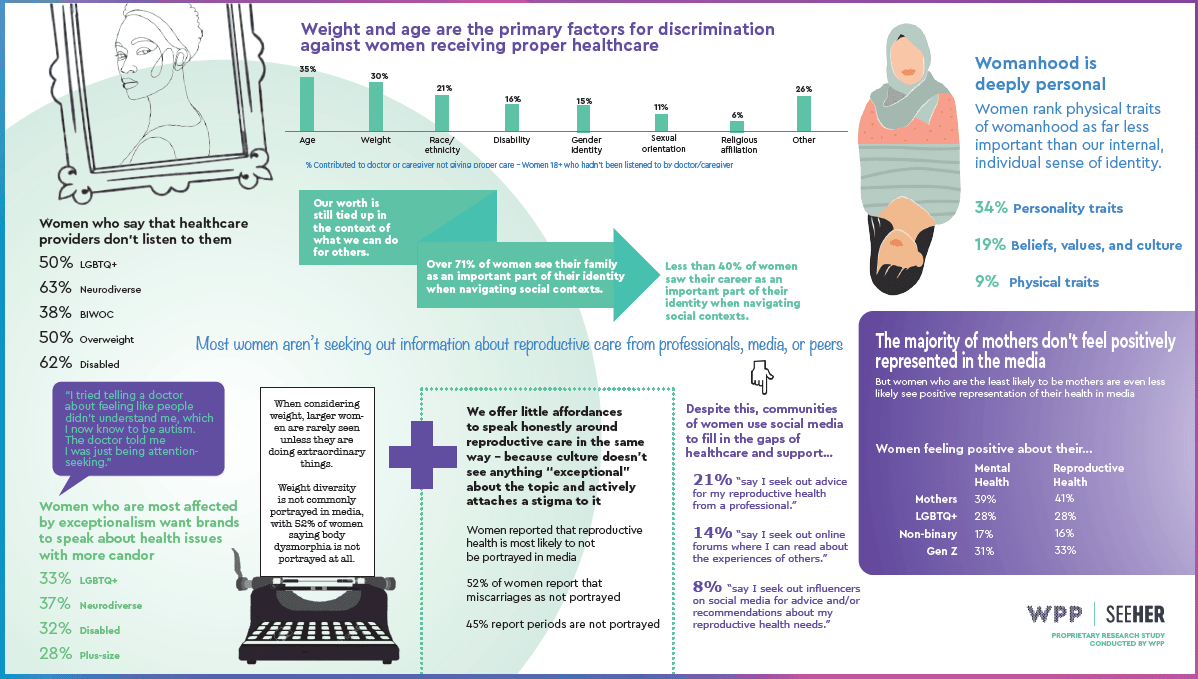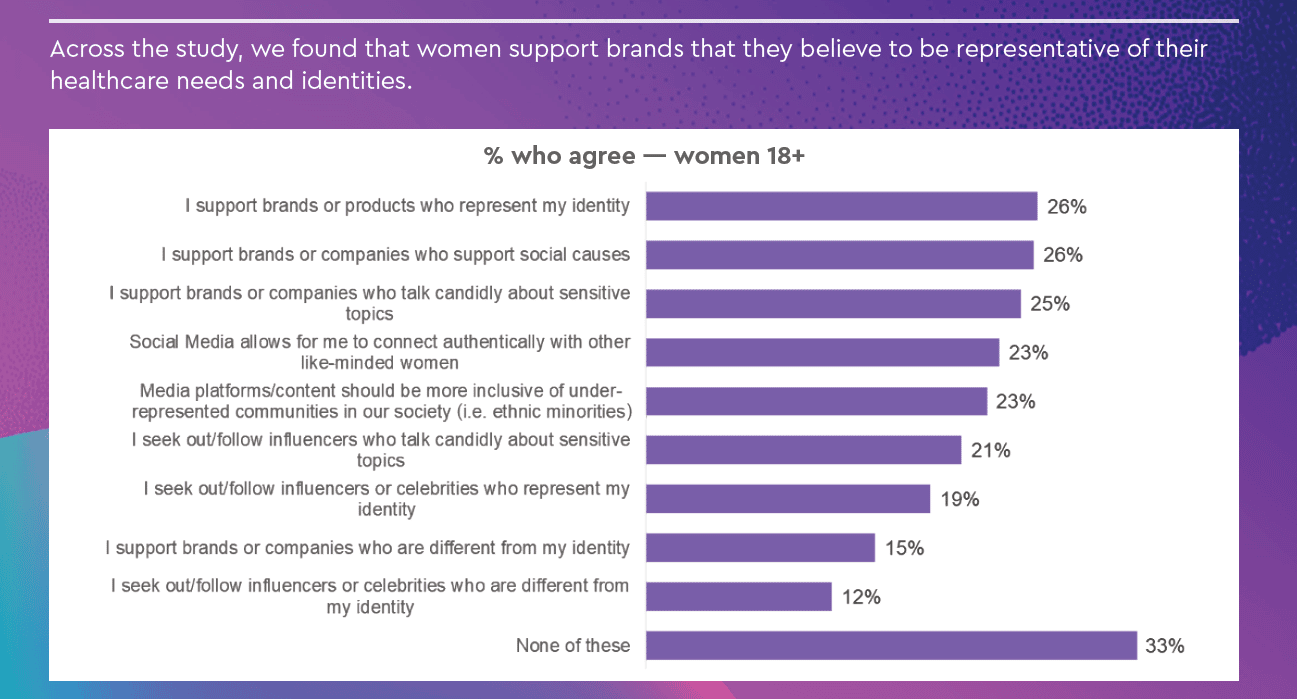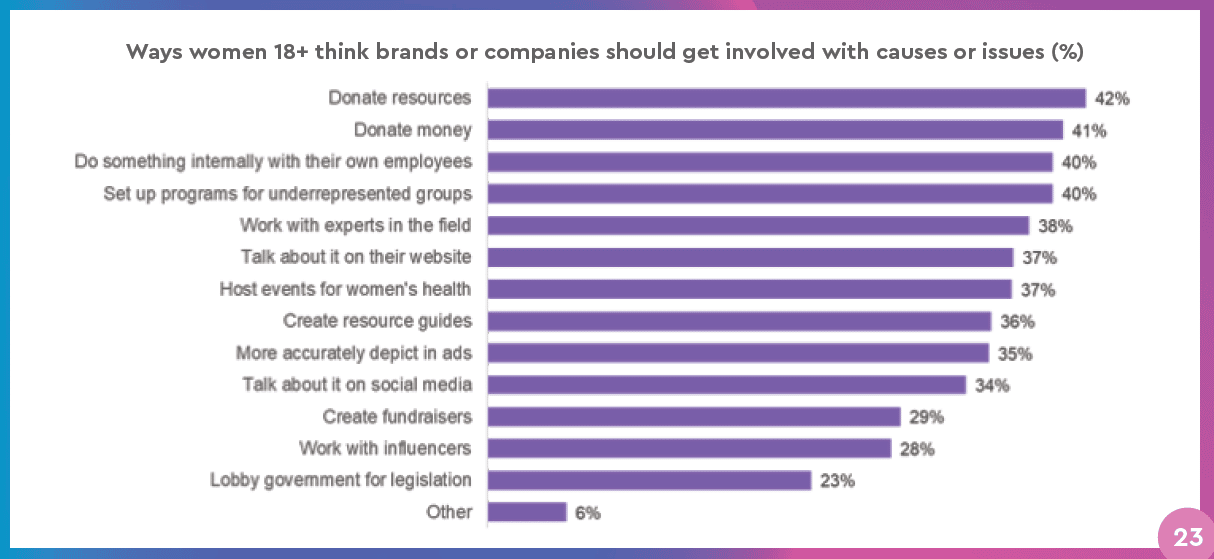A new research study from creative transformation firm WPP and SeeHer, a global movement to accurately portray women in marketing, advertising, media and entertainment, reveals critical gaps and opportunities focused on women and people who identify as women across reproductive care, weight diversity and mental health.
According to the firms’ new study, Health On Her Terms (HOHT), women handle more than 80 percent of healthcare spending decisions in the U.S., and they make up 65 percent of the workforce in the healthcare industry. Yet for all the progress made in gender equality over the years, there are serious disparities and issues in the way women’s health is portrayed in media, and women and other marginalized genders are not framed as a primary audience in health marketing. Women say that they’re likely to be loyal to brands who tackle entrenched and pervasive taboos in media—and speak to them authentically and with dignity.
“Advertisers tend to flatten womanhood and our health needs into a demographic box. But women’s health is far more dynamic and nuanced than how it’s currently presented in the media,” said Lindsay Pattison, chief client officer of WPP, in a news release. “Our industry has a responsibility to transform how women are portrayed and provide more multifaceted representation and prioritize showing women’s mental health more authentically, weight more realistically and reproductive health more inclusively.”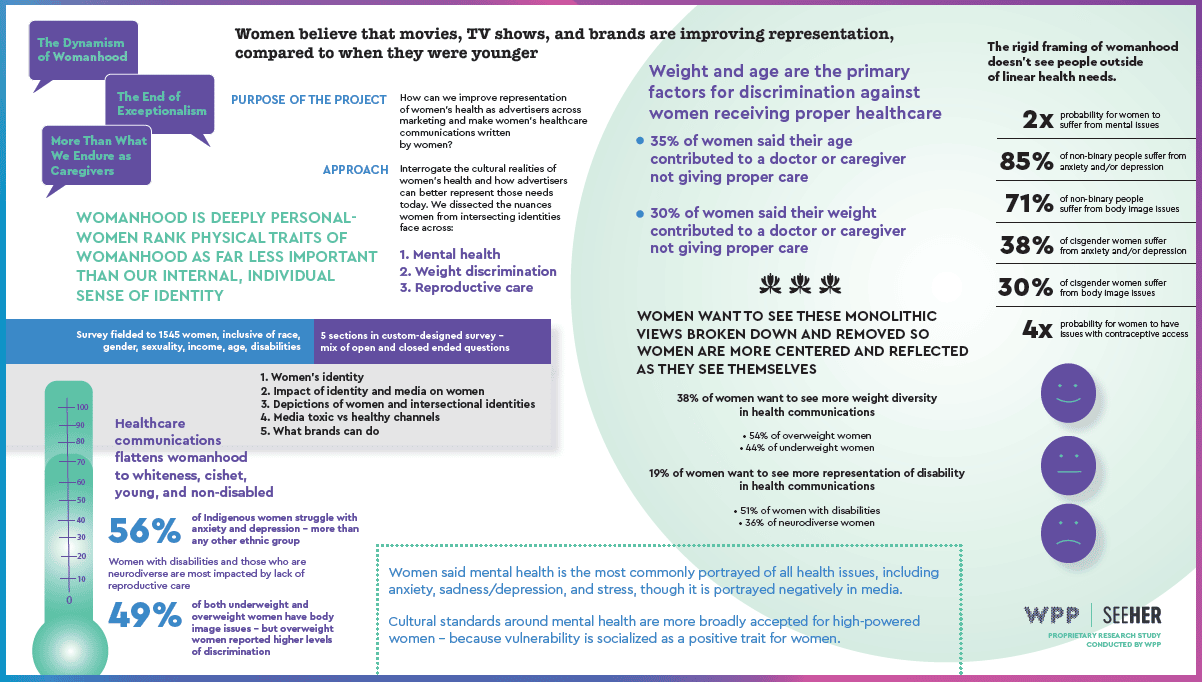
WPP agencies Grey and Mindshare partnered to uncover and analyze prevalent themes on the reality of women’s health in today’s environment, how women’s health is being depicted in media today, and how brands can modify efforts to better represent and transform the support of her health needs.
“This groundbreaking study shows that we as marketers in health and wellness must do a better job listening to the needs of women and connecting with them on their terms and their personal health needs,” said Cassandra Sinclair, president of Grey Health and Wellness, in the release. “Women want brands to be vulnerable, brave, and real. They want brands to understand that their health is personal and connecting with them must be more inclusive of the realities of their lives.”
“The state of women’s health and bodily autonomy, including healthcare for trans and non-binary communities, is in a tenuous place. Media and communications play a significant role in the pervasive taboos on topics like reproductive care, mental health, and more,” said Rachel Lowenstein, global head of inclusive innovation at Mindshare, in the release. “But it doesn’t have to be that way. Brands have an opportunity to affect change and give women and marginalized genders the more nuanced, diverse, honest representation that they deserve. In doing so, they can earn this audience’s loyalty while driving positive change in the world around us.”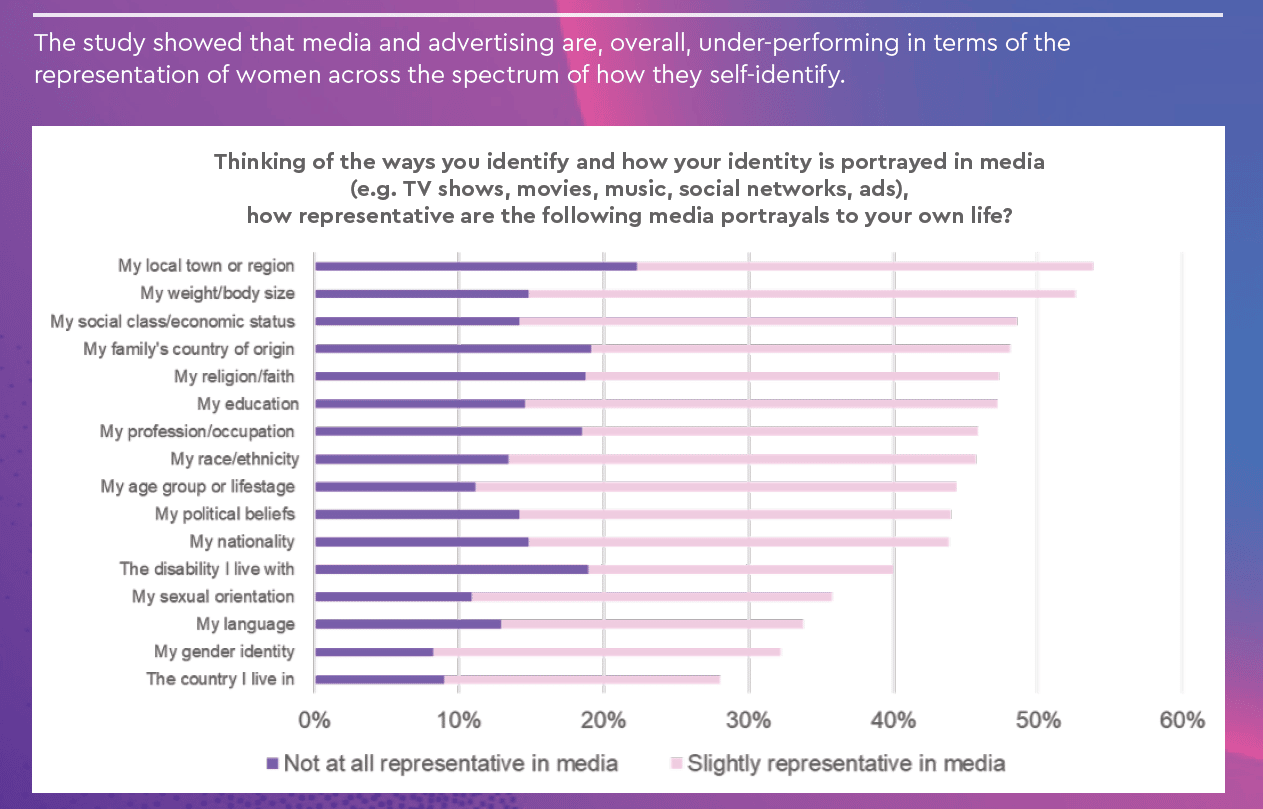
“We’re so proud to partner with WPP on this important study. The insight clearly demonstrates that consumers want content reflecting women in their multiplicity, with diverse needs and experiences, rather than monolithic storytelling,” said Christine Guilfoyle, executive vice president at SeeHer, Association of National Advertisers, in the release. “When it comes to depictions of women’s health and wellness, there is much work to be done. With this study, we are launching a new vertical, SeeHer Health, to accurately represent women’s health and wellness-related issues across marketing, media, and entertainment.”
Top themes that emerged include:
Dynamism of womanhood
The media positions women’s experiences of health in a singular fashion. The way in which brands currently connect with women is at odds with the way in which women self-identify. A total of 44 percent of BIWOC want to see more diverse representations of race/ethnicity in health communications, as the media places a strong emphasis on womanhood as young, white, cishet, and non-disabled.
End of exceptionalism
Research found women are rarely marketed just as they are, with brands instead prioritizing women doing extraordinary things. Marketing efforts need to expand to focus on a broader, more diverse segment of women and decrease focus on this phenomenon of exceptionalism to drive inclusion.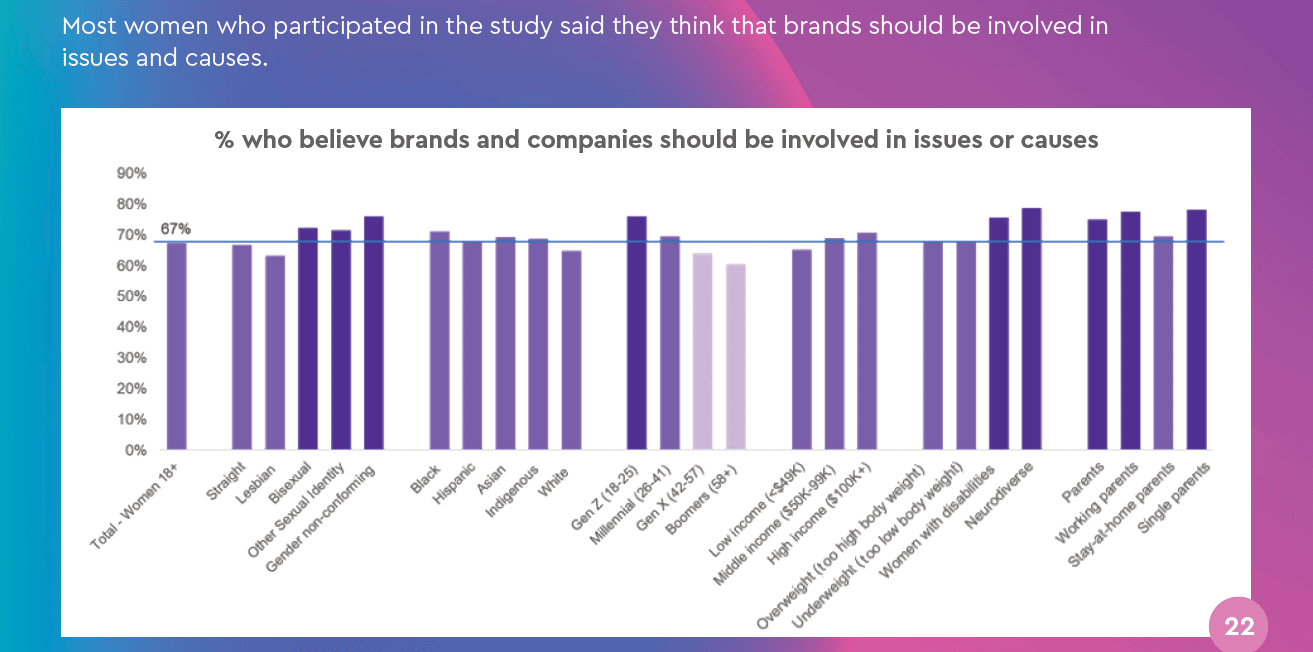
Go beyond women seen solely as caregivers
Women are still seen primarily in the context of their ability to care for others and expressed the need to be seen for her whole self. Her self-worth needs to be seen as more than caring for others.
WPP and SeeHer pursued this research to encourage brands and organizations to break down historical barriers and invest further thinking, insights and resources to ensure women’s true perspectives and needs are accurately translated into strategies to drive better health outcomes for women.
Download the full report here.
The team designed and fielded a custom online survey to 1,545 women and non-binary people ages 18+ across the U.S., leveraging the Audience Origin platform run by Kantar Profiles Health. The audience was inclusive of race, gender, sexuality, income, age, and disabilities.


